Vertical Transportation System Power Usage: Behavioural Case Study of Regulated Buildings in Bangkok
Abstract
:1. Introduction
2. Principle of Vertical Transport Power Usage Behaviour
3. Methodology for Behavioural Analysis of the Vertical Transport Power Usage
4. Results and Discussion
5. Conclusions
Author Contributions
Funding
Institutional Review Board Statement
Informed Consent Statement
Data Availability Statement
Conflicts of Interest
References
- Xuchao, W.; Priyadarsini, R.; Siew Eang, L. Benchmarking energy use and greenhouse gas emissions in Singapore’s hotel industry. Energy Policy 2010, 38, 4520–4527. [Google Scholar] [CrossRef]
- Chung, W.; Kam, M.S.; Ip, C.Y. A study of residential energy use in Hong Kong by decomposition analysis, 1990–2007. Appl. Energy 2011, 88, 5180–5187. [Google Scholar] [CrossRef]
- Jiang, P. Analysis of national and local energy-efficiency design standards in the public building sector in China. Energy Sustain. Dev. 2011, 15, 443–450. [Google Scholar] [CrossRef]
- Xiao, H.; Wei, Q.; Jiang, Y. The reality and statistical distribution of energy consumption in office buildings in China. Energy Build. 2012, 50, 259–265. [Google Scholar] [CrossRef]
- Ang, B.W. LMDI decomposition approach: A guide for implementation. Energy Policy 2015, 86, 233–238. [Google Scholar] [CrossRef]
- Lu, Y.; Cui, P.; Li, D. Which activities contribute most to building energy consumption in China? A hybrid LMDI decomposition analysis from year 2007 to 2015. Energy Build. 2018, 165, 259–269. [Google Scholar] [CrossRef]
- Aghemo, C.; Virgone, J.; Fracastoro, G.V.; Pellegrino, A.; Blaso, L.; Savoyat, J.; Johannes, K. Management and monitoring of public buildings through ICT based systems: Control rules for energy saving with lighting and HVAC services. Front. Archit. Res. 2013, 2, 147–161. [Google Scholar] [CrossRef] [Green Version]
- Hong, T.; Taylor-Lange, S.C.; D’Oca, S.; Yan, D.; Corgnati, S.P. Advances in research and applications of energy-related occupant behavior in buildings. Energy Build. 2016, 116, 694–702. [Google Scholar] [CrossRef] [Green Version]
- Zhao, J.; Xin, Y.; Tong, D. Energy consumption quota of public buildings based on statistical analysis. Energy Policy 2012, 43, 362–370. [Google Scholar] [CrossRef]
- Ma, H.; Lu, W.; Yin, L.; Shen, X. Public Building Energy Consumption Level and Influencing Factors in Tianjin. Energy Procedia 2016, 88, 146–152. [Google Scholar] [CrossRef]
- Liu, G.; Wu, Z.; Hu, M. Energy Consumption and Management in Public Buildings in China: An Investigation of Chongqing. Energy Procedia 2012, 14, 1925–1930. [Google Scholar] [CrossRef] [Green Version]
- Zografakis, N.; Gillas, K.; Pollaki, A.; Profylienou, M.; Bounialetou, F.; Tsagarakis, K.P. Assessment of practices and technologies of energy saving and renewable energy sources in hotels in Crete. Renew. Energy 2011, 36, 1323–1328. [Google Scholar] [CrossRef]
- Amer, M.; Daim, T.U. Selection of renewable energy technologies for a developing county: A case of Pakistan. Energy Sustain. Dev. 2011, 15, 420–435. [Google Scholar] [CrossRef]
- Yao, Z.; Zhuang, Z.; Gu, W. Study on Energy Use Characteristics of Hotel Buildings in Shanghai. Procedia Eng. 2015, 121, 1977–1982. [Google Scholar] [CrossRef] [Green Version]
- Ma, H.; Du, N.; Yu, S.; Lu, W.; Zhang, Z.; Deng, N.; Li, C. Analysis of typical public building energy consumption in northern China. Energy Build. 2017, 136, 139–150. [Google Scholar] [CrossRef]
- Delzendeh, E.; Wu, S.; Lee, A.; Zhou, Y. The impact of occupants’ behaviours on building energy analysis: A research review. Renew. Sustain. Energy Rev. 2017, 80, 1061–1071. [Google Scholar] [CrossRef]
- Hong, T.; Li, C.; Yan, D. Updates to the China Design Standard for Energy Efficiency in public buildings. Energy Policy 2015, 87, 187–198. [Google Scholar] [CrossRef] [Green Version]
- Ang, J.H.; Yusup, Y.; Zaki, S.A.; Salehabadi, A.; Ahmad, M.I. Comprehensive Energy Consumption of Elevator Systems Based on Hybrid Approach of Measurement and Calculation in Low- and High-Rise Buildings of Tropical Climate towards Energy Efficiency. Sustainability 2022, 14, 4779. [Google Scholar] [CrossRef]
- Tukia, T.; Uimonen, S.; Siikonen, M.-L.; Hakala, H.; Donghi, C.; Lehtonen, M. Explicit method to predict annual elevator energy consumption in recurring passenger traffic conditions. J. Build. Eng. 2016, 8, 179–188. [Google Scholar] [CrossRef] [Green Version]
- Hao, W.; Xiaoqing, C.; Jiai, X. Measurement and Analysis on Energy Efficiency of Elevators in Shanghai. In Proceedings of the ASME 2014 12th Biennial Conference on Engineering Systems Design and Analysis, Copenhagen, Denmark, 25–27 July 2014. [Google Scholar]
- Niu, D.; Guo, L.; Zhao, W.; Li, H. Operation performance evaluation of elevators based on condition monitoring and combination weighting method. Measurement 2022, 194, 111091. [Google Scholar] [CrossRef]
- Markos, P.A.; Dentsoras, A.J. An integrated mathematical method for traffic analysis of elevator systems. Appl. Math. Model. 2022, 105, 50–80. [Google Scholar] [CrossRef]
- Supapradit Marsong, B.P. Implementation analysis of an elevator energy regenerative unit -EERU- for energy saving in a building. In Proceedings of the 2016 13th International Conference on Electrical Engineering/Electronics, Computer, Telecommunications and Information Technology (ECTI-CON), Chang Mai, Thailand, 28 June–1 July 2016. [Google Scholar]
- Murshed, S.M.; Duval, A.; Koch, A.; Rode, P. Impact of Urban Morphology on Energy Consumption of Vertical Mobility in Asian Cities—A Comparative Analysis with 3D City Models. Urban Sci. 2019, 3, 4. [Google Scholar] [CrossRef] [Green Version]
- Zhang, Y.; Yan, Z.; Yuan, F.; Yao, J.; Ding, B. A Novel Reconstruction Approach to Elevator Energy Conservation Based on a DC Micro-Grid in High-Rise Buildings. Energies 2018, 12, 33. [Google Scholar] [CrossRef] [Green Version]
- Carlos Patrão, A.D. A Energy Efficient Elevators and Escalators. Available online: https://www.eceee.org/library/conference_proceedings/eceee_Summer_Studies/2009/Panel_4/4.037/ (accessed on 8 October 2022).
- Tukia, T.; Uimonen, S.; Siikonen, M.-L.; Hakala, H.; Lehtonen, M. A study for improving the energy efficiency of lifts with adjustable counterweighting. Build. Serv. Eng. Res. Technol. 2017, 38, 421–435. [Google Scholar] [CrossRef]
- Rotimi, A.; Bahadori-Jahromi, A.; Mylona, A.; Godfrey, P.; Cook, D. Estimation and Validation of Energy Consumption in UK Existing Hotel Building Using Dynamic Simulation Software. Sustainability 2017, 9, 1391. [Google Scholar] [CrossRef] [Green Version]
- Krakowski, T.; Ruta, H. Analysis and Assessment of Energy Efficiency of Passenger Lifts. Adv. Sci. Technol. Res. J. 2018, 12, 257–265. [Google Scholar] [CrossRef]
- Zhang, Y.; Bai, X.; Mills, F.P.; Pezzey, J.C.V. Rethinking the role of occupant behavior in building energy performance: A review. Energy Build. 2018, 172, 279–294. [Google Scholar] [CrossRef]
- Hakala, H. Applications of Linear Motors in Elevator Hoisting Machines. Ph.D. Thesis, Tampere University of Technology, Tampere, Finland, 1995. [Google Scholar]
- Barney, G. Elevator Traffic Handbook: Theory and Practice, 2nd ed.; Routledge: London, UK, 2003; p. 476. [Google Scholar]
- Strakosch, G.R. The Vertical Transportation Handbook, 4th ed.; John Wiley & Sons: New York, NY, USA, 1982; p. 512. [Google Scholar]

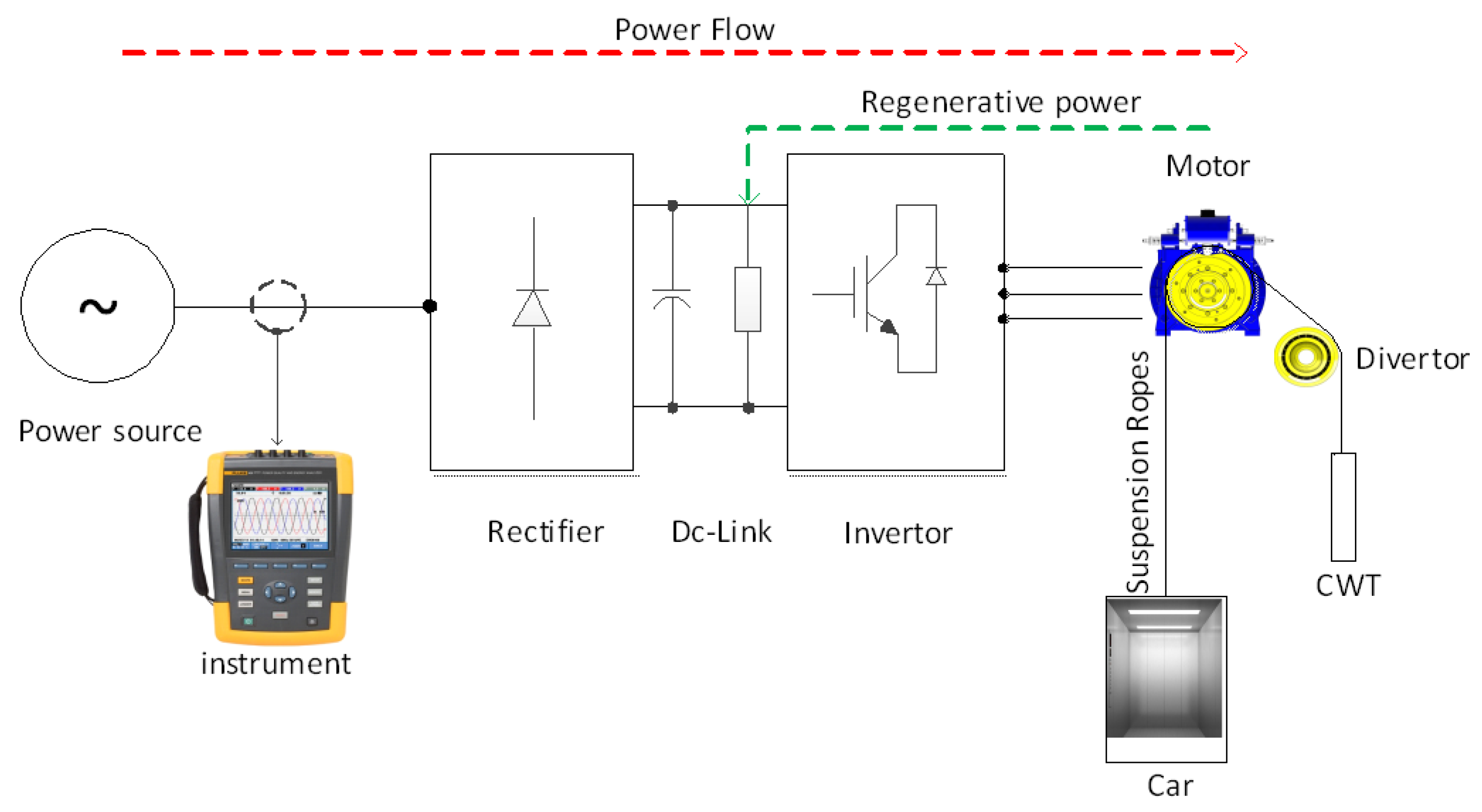

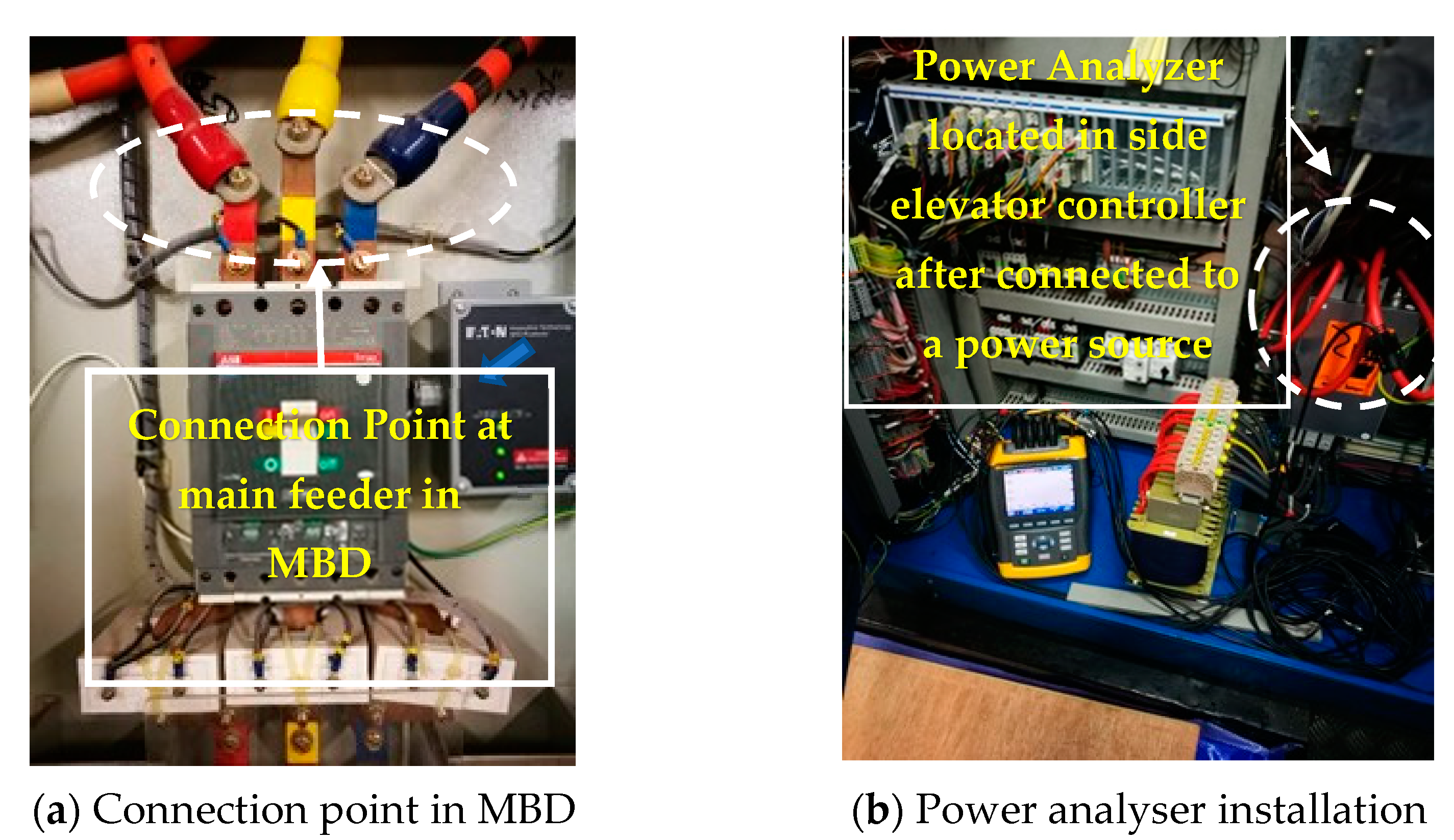
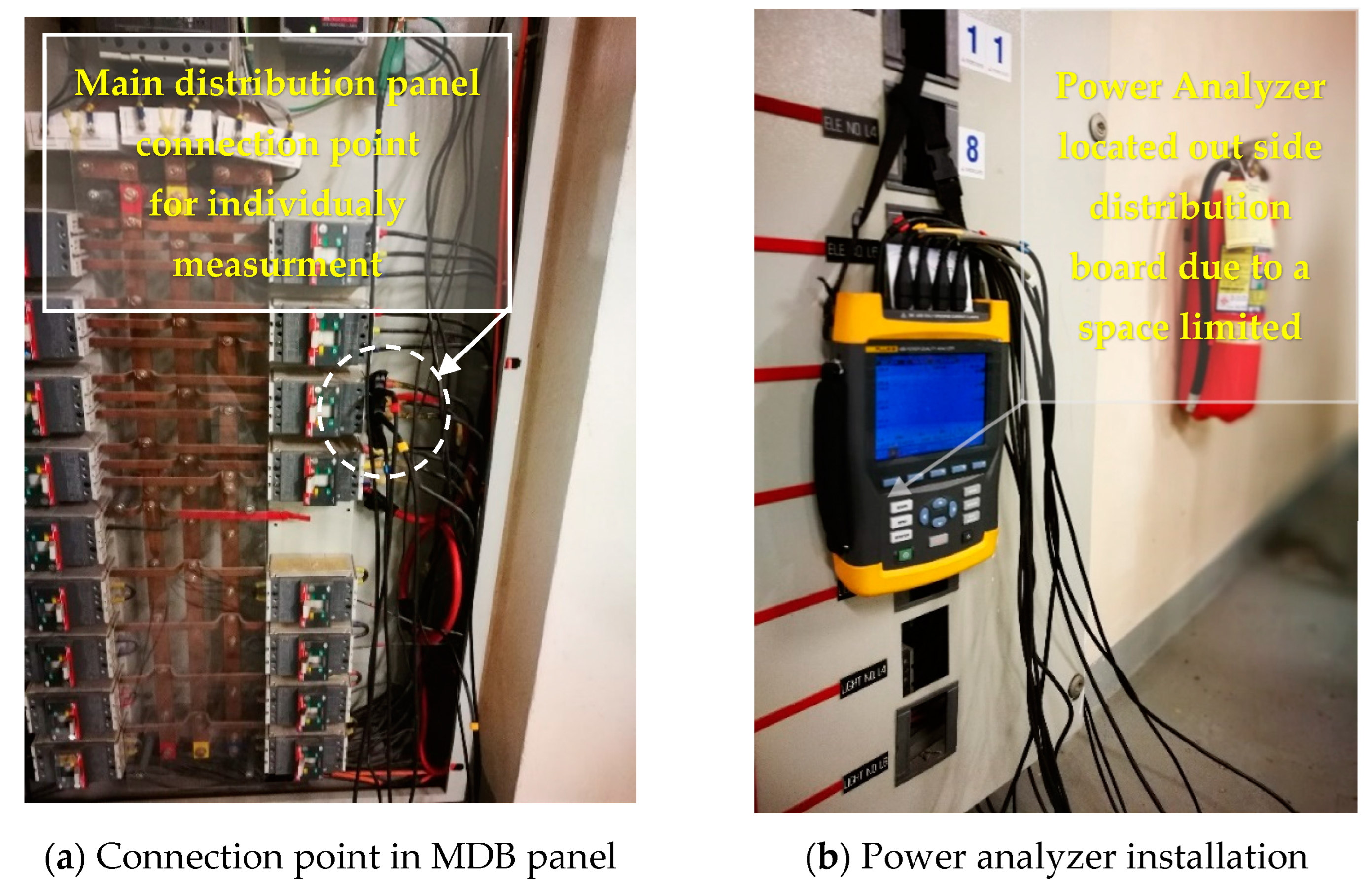

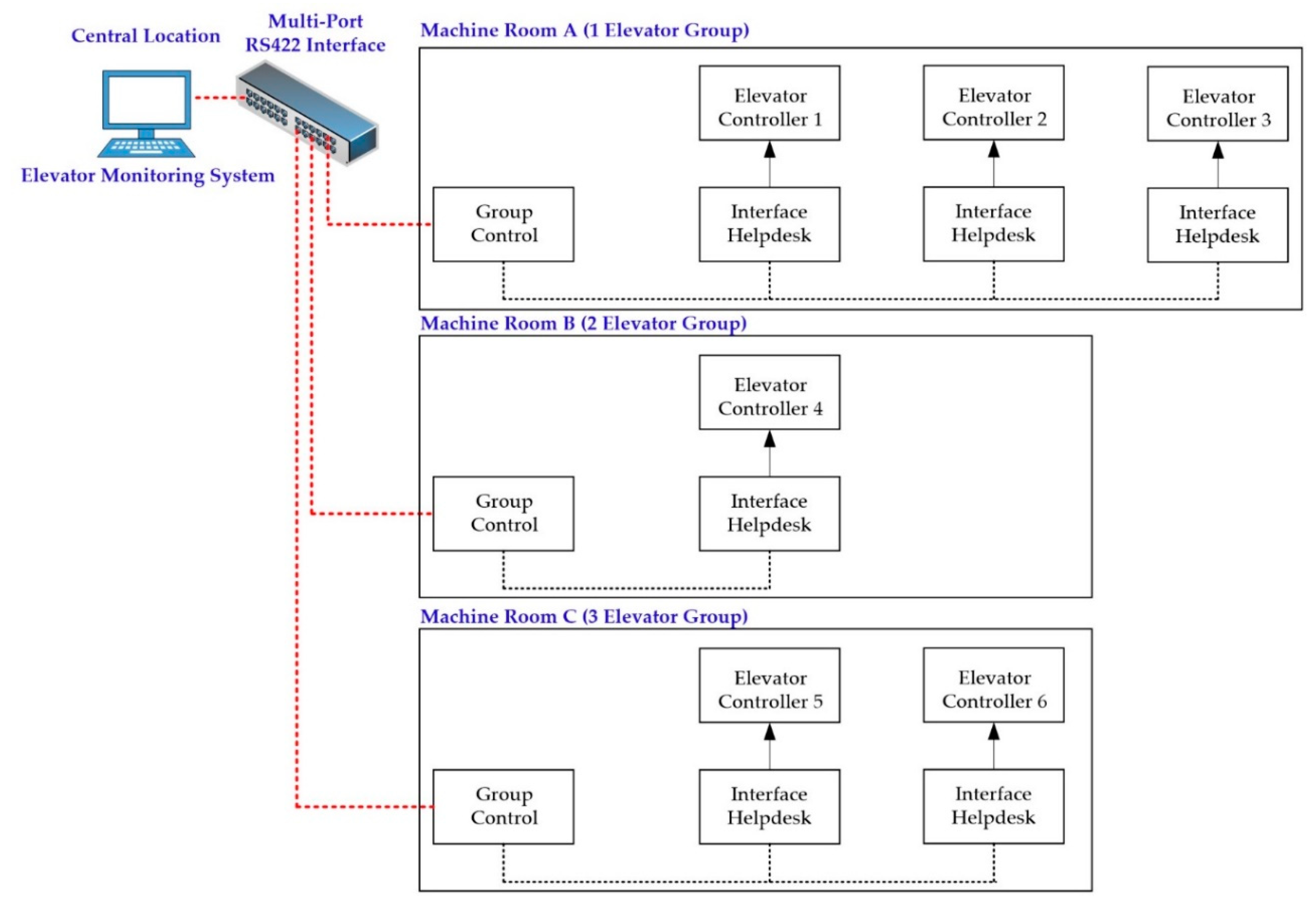

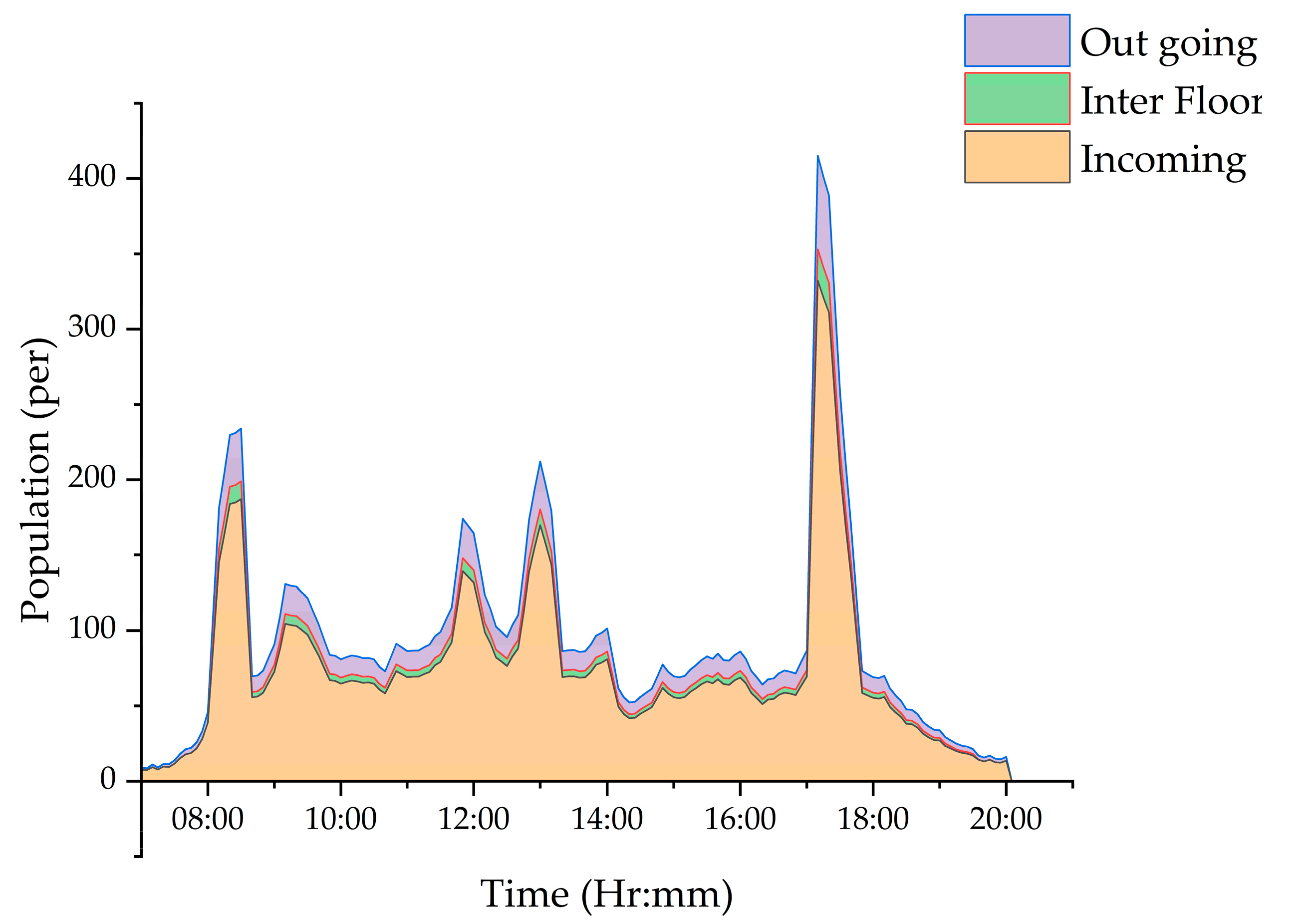
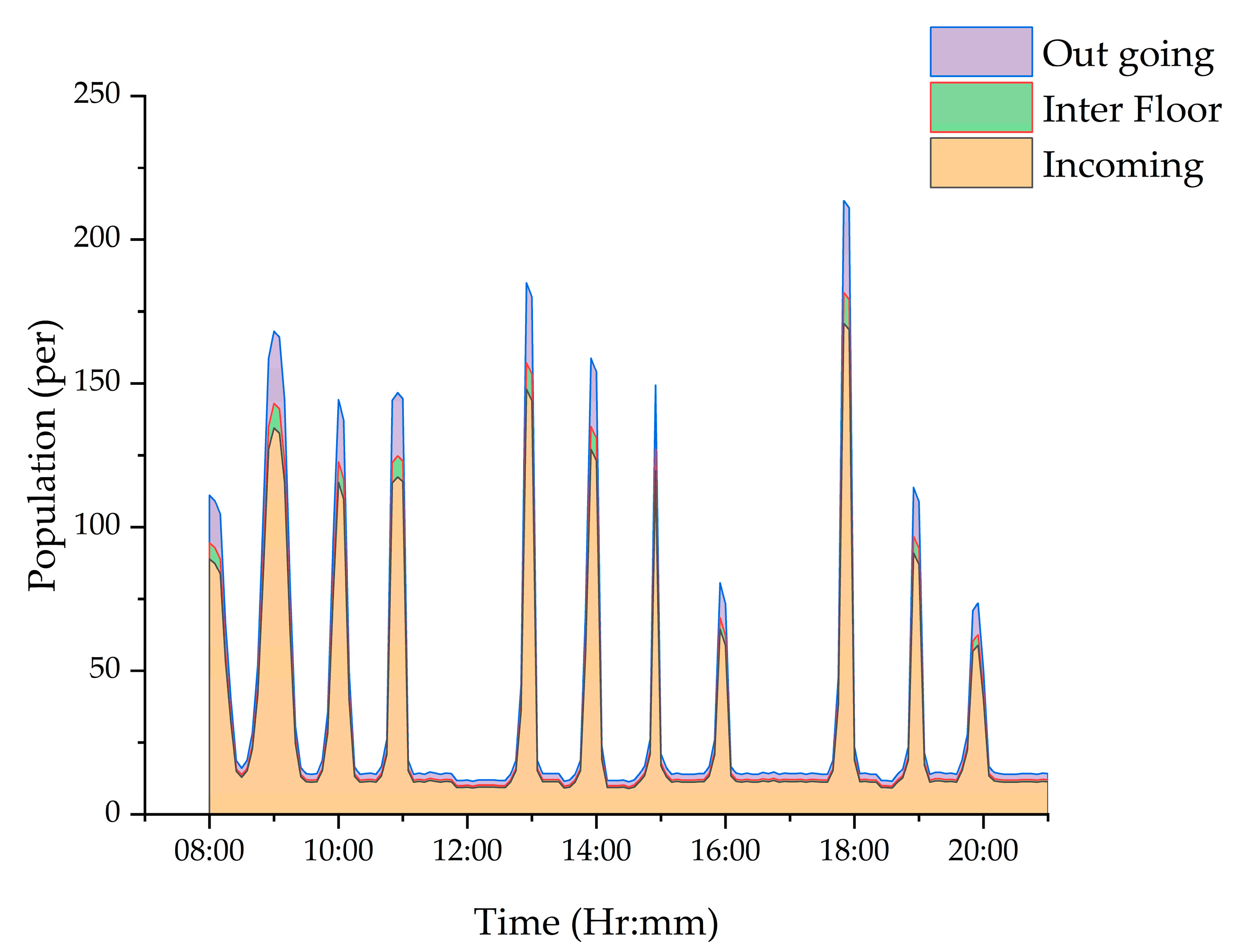

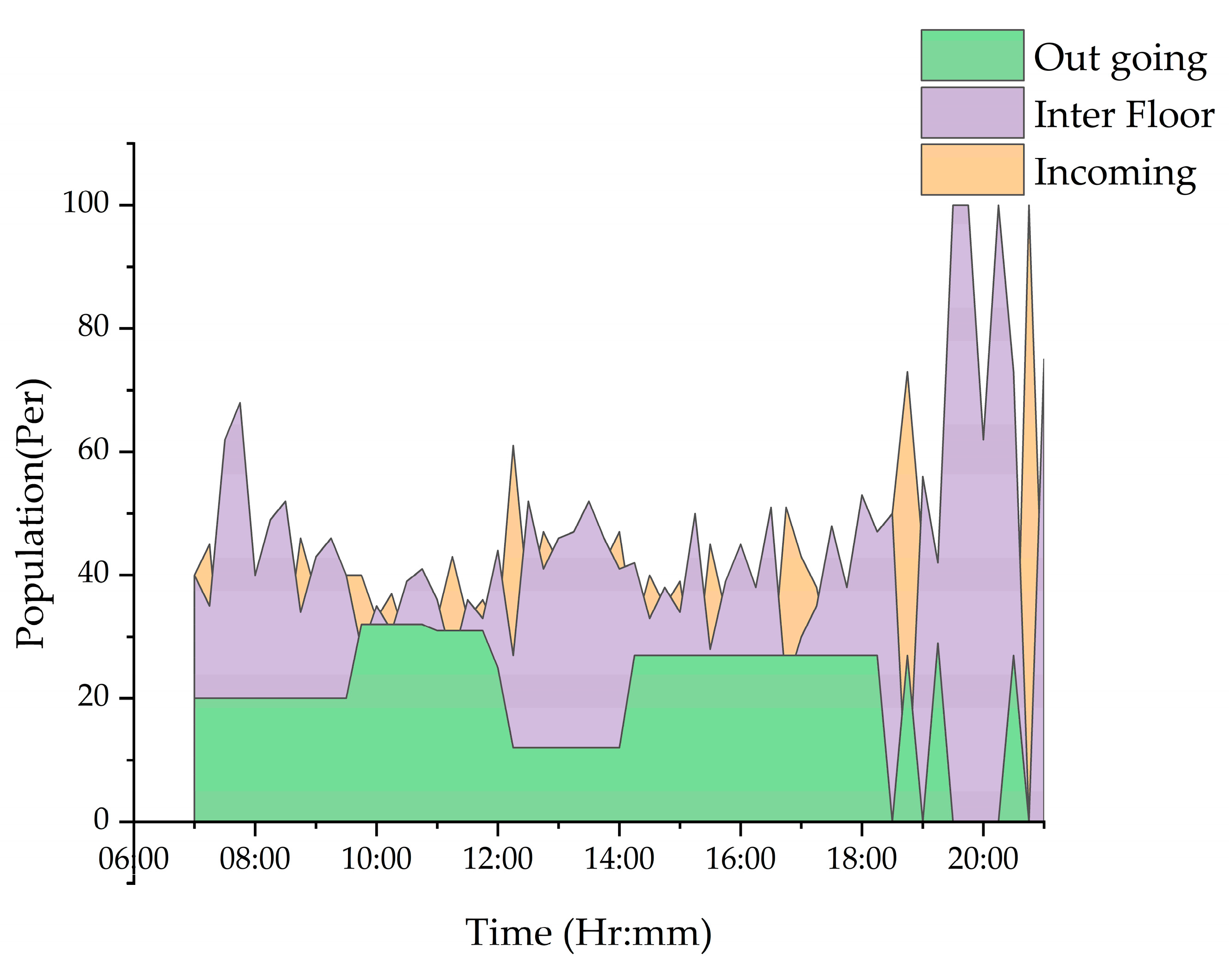
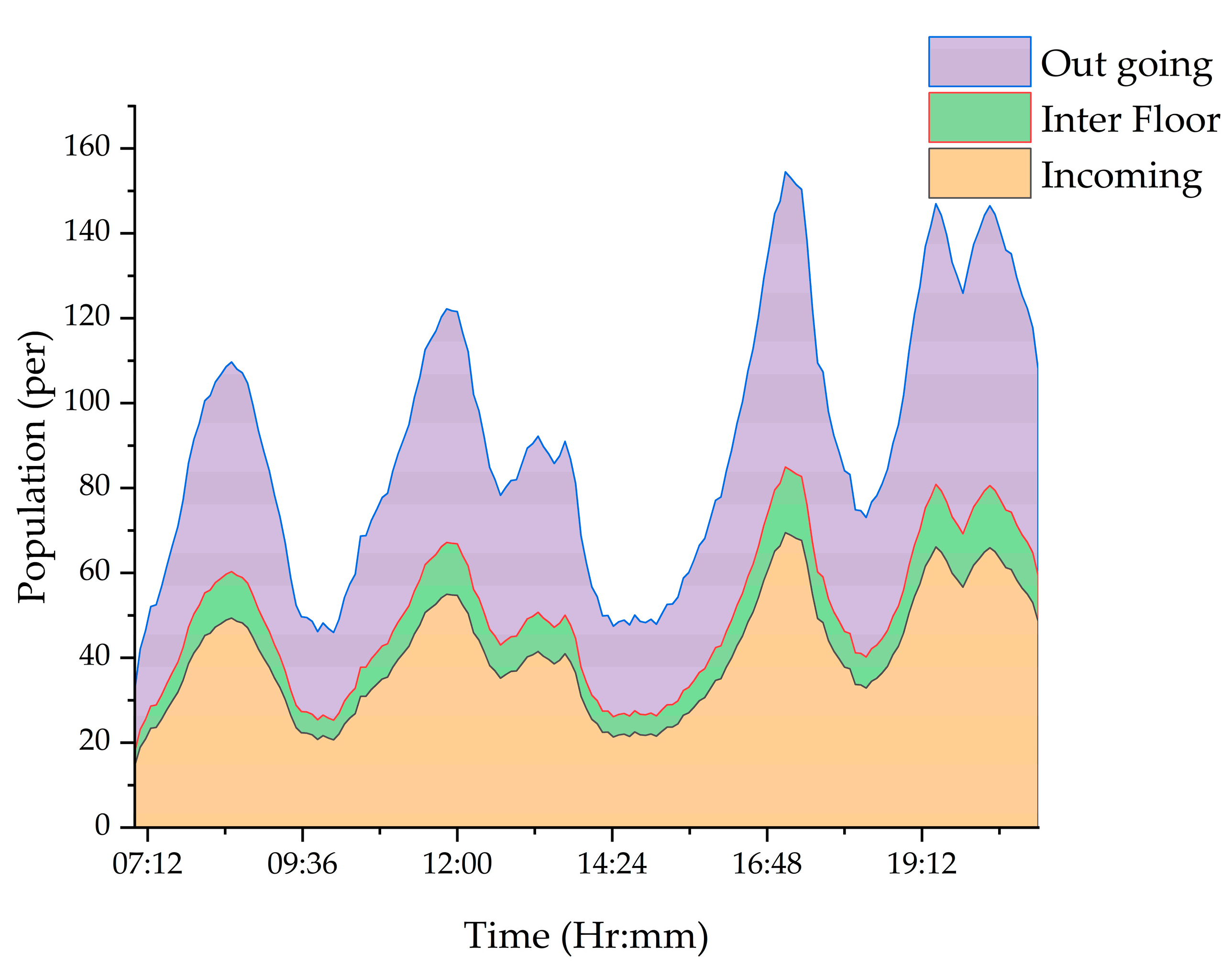

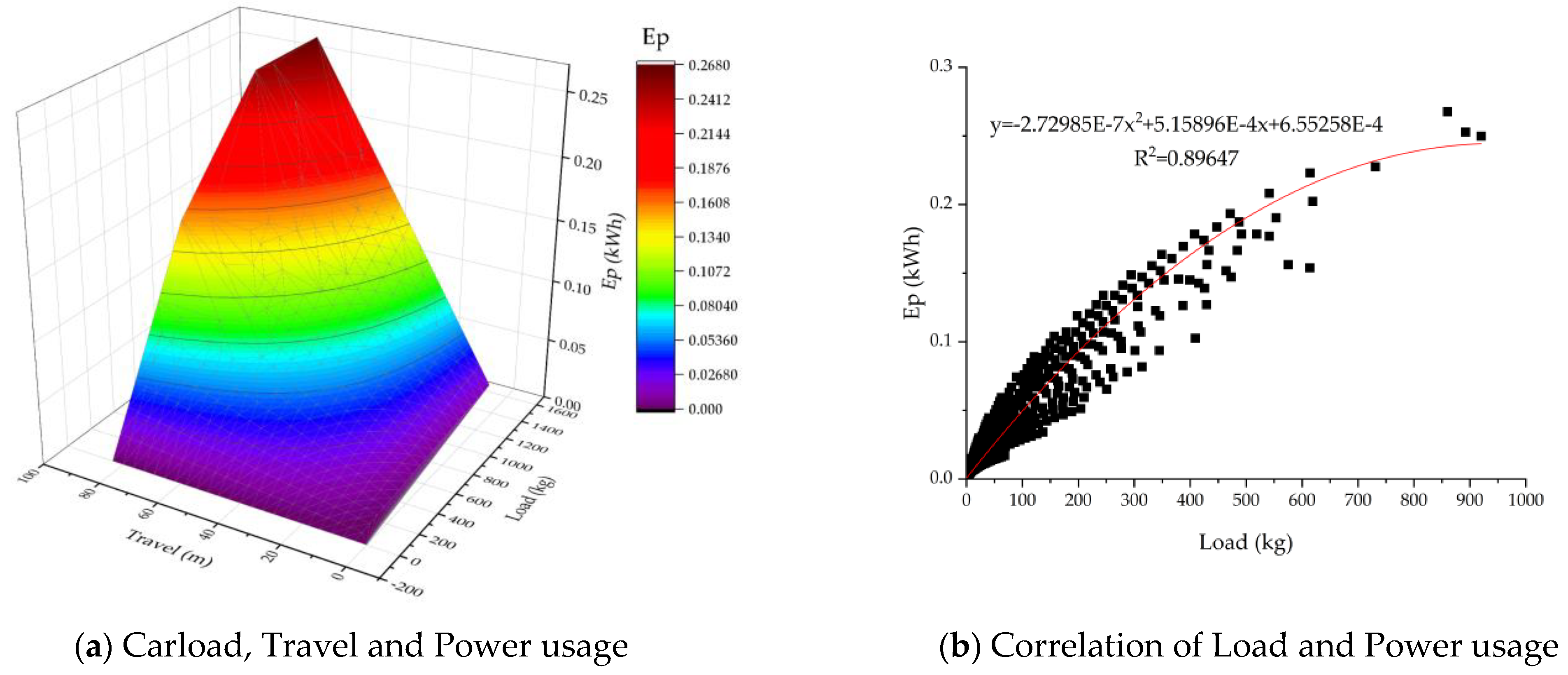
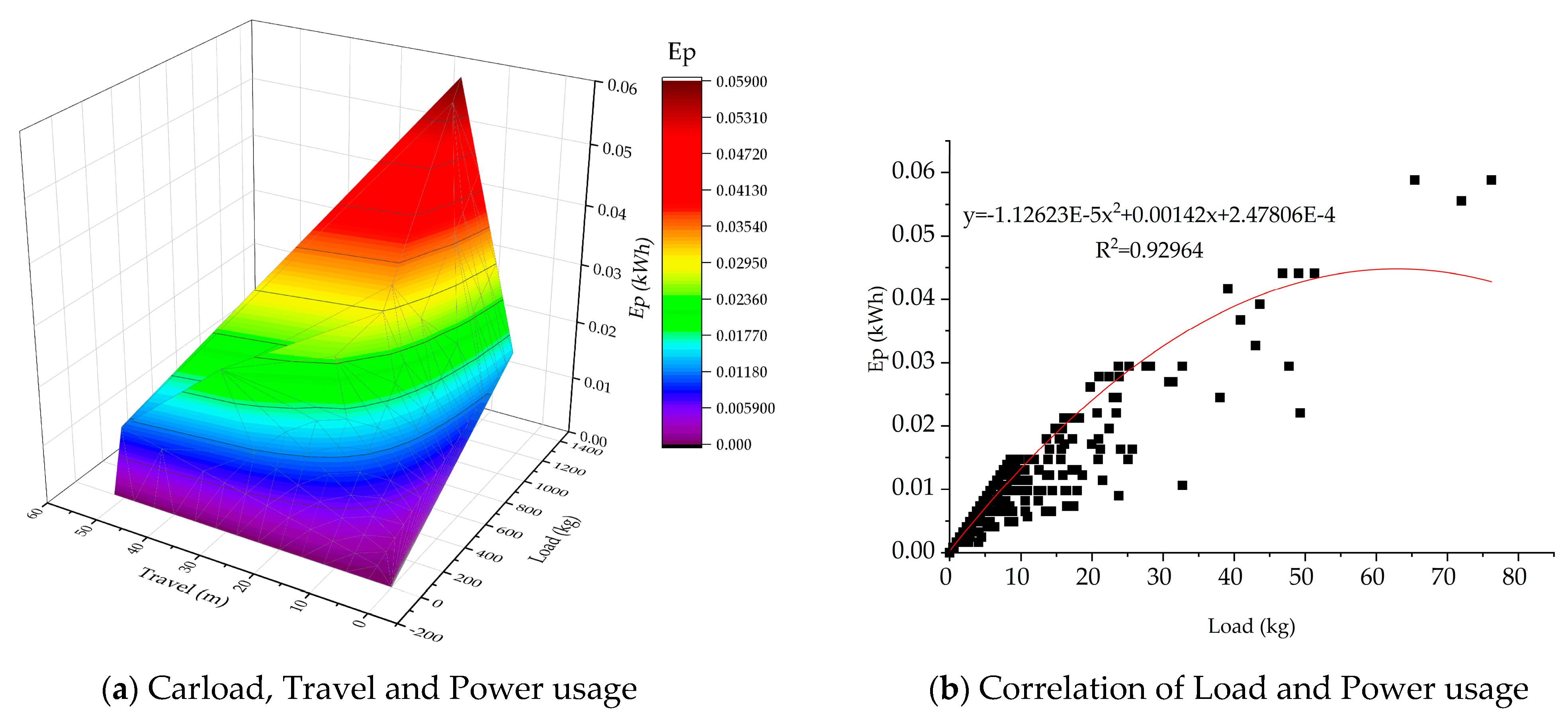

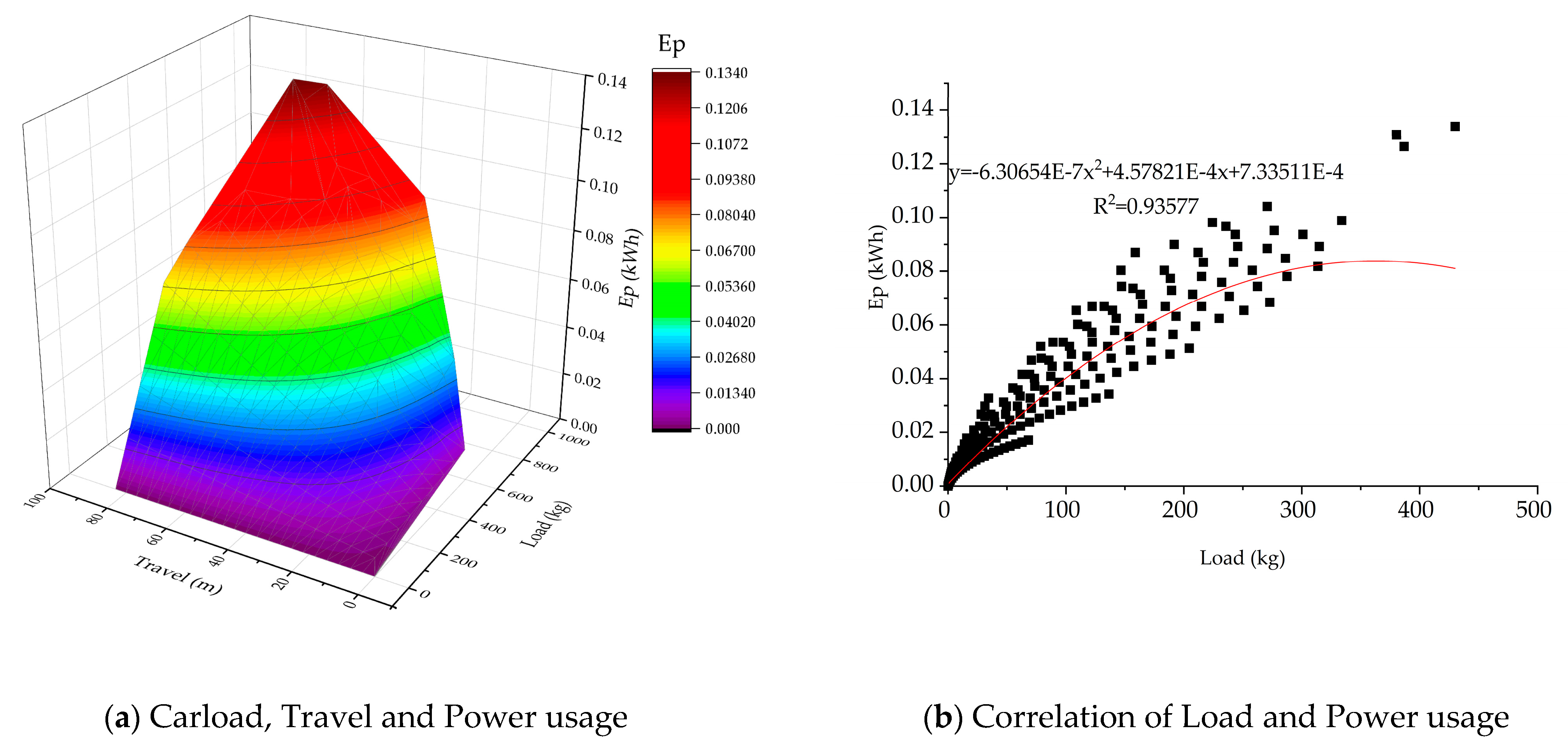
| Type | Office | University | Hotel | Hospital | Residential |
|---|---|---|---|---|---|
| Usage category | 6 | 5 | 5 | 6 | 4 |
| No. of trips per day (trip) | 2000 | 1500 | 1000 | 2500 | 900 |
| GFA (m2) | 80,000 | 50,000 | 28,000 | 70,262 | 40,050 |
| Population Density | 10 m2/person | 18 m2/person | 23 m2/person | 21 m2/person | 45 m2/room |
| Occupancy Rate | 85% | 95% | 64% | 83% | 75% |
| Type | Office | University | Hotel | Hospital | Residential |
|---|---|---|---|---|---|
| Rated load (kg) | 2000 | 1600 | 1800 | 1800 | 1800 |
| Rise (m) | 75 | 68 | 87 | 65 | 200 |
| Number of floors | 24 | 19 | 24 | 12 | 50 |
| Nominal speed (m/s) | 2.5 | 2.0 | 2.5 | 2.0 | 6.0 |
| Acceleration (m/s2) | 1.0 | 1.0 | 1.0 | 0.8 | 1.0 |
| Jerk (m/s3) | 1.2 | 1.2 | 1.2 | 0.8 | 1.2 |
| Roping | 2:1 | 2:1 | 1:1 | 1:1 | 1:1 |
| Daily trips | 2000 | 1500 | 1000 | 2500 | 900 |
| Average carload (%) | 40% | 50% | 30% | 50% | 25% |
| Counterbalancing (%) | 50.00% | 50.00% | 50.00% | 50.00% | 50.00% |
Publisher’s Note: MDPI stays neutral with regard to jurisdictional claims in published maps and institutional affiliations. |
© 2022 by the authors. Licensee MDPI, Basel, Switzerland. This article is an open access article distributed under the terms and conditions of the Creative Commons Attribution (CC BY) license (https://creativecommons.org/licenses/by/4.0/).
Share and Cite
Marsong, S.; Kongjeen, Y.; Plangklang, B. Vertical Transportation System Power Usage: Behavioural Case Study of Regulated Buildings in Bangkok. Sustainability 2022, 14, 13267. https://doi.org/10.3390/su142013267
Marsong S, Kongjeen Y, Plangklang B. Vertical Transportation System Power Usage: Behavioural Case Study of Regulated Buildings in Bangkok. Sustainability. 2022; 14(20):13267. https://doi.org/10.3390/su142013267
Chicago/Turabian StyleMarsong, Supapradit, Yuttana Kongjeen, and Boonyang Plangklang. 2022. "Vertical Transportation System Power Usage: Behavioural Case Study of Regulated Buildings in Bangkok" Sustainability 14, no. 20: 13267. https://doi.org/10.3390/su142013267









